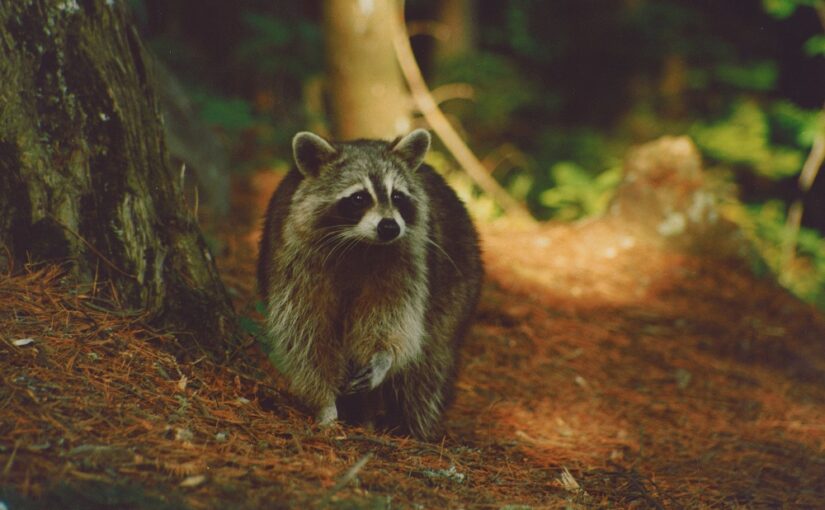If you’re new to Ontario Parks, you might be a little nervous about the animals that call our parks home.
Many of us live in cities or suburbs, with little interaction with wildlife, so we don’t know how to react or behave. We want your parks experience to be fun and safe, both for you and for the wildlife that live here.
Today, let’s talk about:
- the types of critters you might encounter at Ontario Parks
- some simple tips to prevent negative wildlife interactions
Wildlife tips
1. Give wild animals their space (and lots of it!)
2. Don’t feed the wildlife
3. Keep dogs on leash
4. Store wildlife attractants properly — it’s the law!
What kind of wildlife could you spot in our parks?
1. Snakes
2. Squirrels and chipmunks
3. Raccoons
4. Skunks
5. Bears
6. Wolves and coyotes
1. Give wild animals their space (and lots of it!)
There’s a good chance you’ll catch a glimpse of wildlife while visiting a provincial park. This is wonderful, and can be very exciting!
But please: give them space and enjoy them from a distance.
The amount of space depends on the animal. The bigger they are, the more space you should give them.
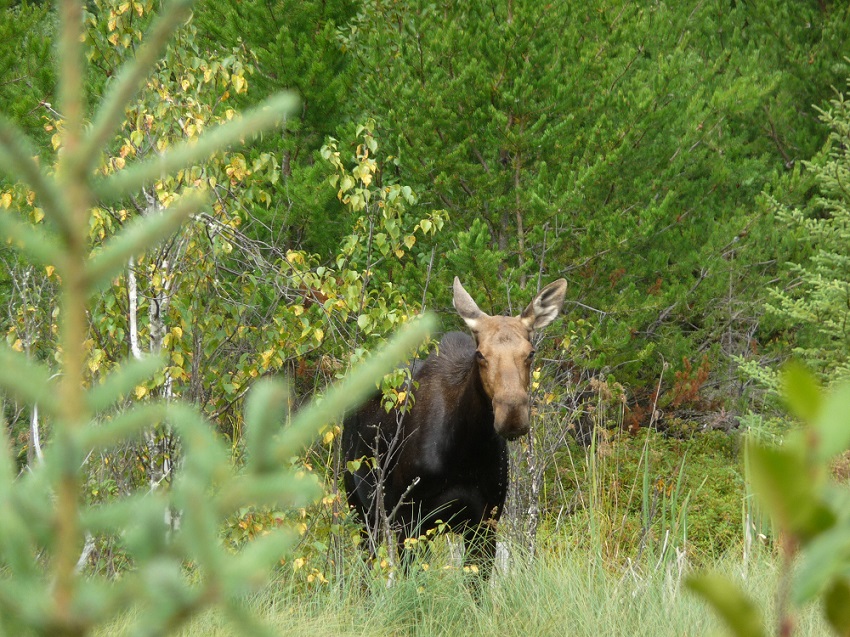
Approaching these animals can stress them out, even though you may not recognize the signs of stress when you get closer and try to interact.
By running from you, they’re wasting valuable energy escaping, rather than using their energy to grow, care for young, or put on fat for the long winter ahead.
Be safe, and don’t forget your binoculars so you can watch from a healthy distance.
2. Don’t feed the wildlife
Have you heard about the Old Man of Algonquin?
He was a fox who lived with his mate near a busy road. Unscrupulous park visitors would throw him and his family food, snapping a photo to share with their friends.
What they didn’t see was the pain and suffering their actions of feeding wildlife caused. Because the foxes were used to being fed near the road, they were at higher risk of being hit by a vehicle. Roads are extremely hazardous to wildlife.
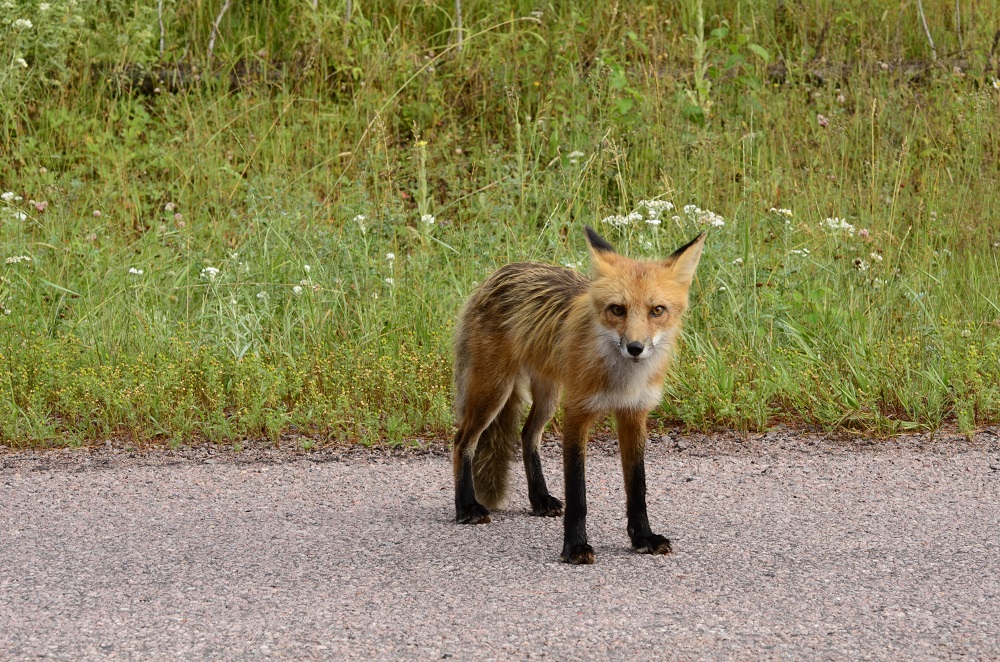
The Old Man of Algonquin and his mate had many offspring that were killed on the road. Eventually the Old Man himself was hit, suffering extreme injuries along with his mate and offspring.
This would never have happened if visitors didn’t feed these animals. Let wild animals be wild; never feed them.
3. Keep dogs on leash
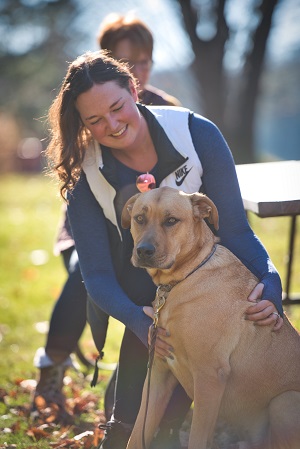
The one animal you shouldn’t give space to is your pet dog. It might seem like a great opportunity to let your dogs roam free when visiting a park, but your dog is a dangerous predator to many forest dwellers, including threatened and endangered species.
Even the best-trained dogs may not respond to their owner when faced with a stimulus like a wild running animal.
Many wild animals will defend themselves if approached by a dog, putting your pet at risk.
Dogs must always remain on a leash no longer than 2 m while in a provincial park. This is for the safety of the wildlife that inhabits the park, you, and your beloved pet.
4. Store wildlife attractants properly — it’s the law!
What are “wildlife attractants?” They’re items that are smelly and might “attract” animals, such as:
- human food
- bird seed
- toiletries, such as soap or toothpaste
- garbage
- anything else that has a smell that might attract wildlife
Many animals have powerful noses. They can smell food and other attractants from far away.
To stop them from following their noses, keep any potential wildlife attractants properly stored.
Lock them in the trunk of your vehicle (or inside with the windows closed), or use the animal-proof containers that some parks have available.
Ask our staff for help; we’re happy to answer questions and offer advice. And remember: you could receive a ticket if attractants are improperly stored.
What kind of wildlife could you spot in our parks?
Part of what makes Ontario Parks so special is their ecological integrity and the diversity of species that make up these natural spaces.
You can protect all wildlife by keeping your distance and leaving no trace when you visit.
Here are some of the critters you might encounter during your visit:
Snakes
Ontario is home to 17 snake species. They eat bugs, small rodents, eggs, and amphibians like frogs and toads.
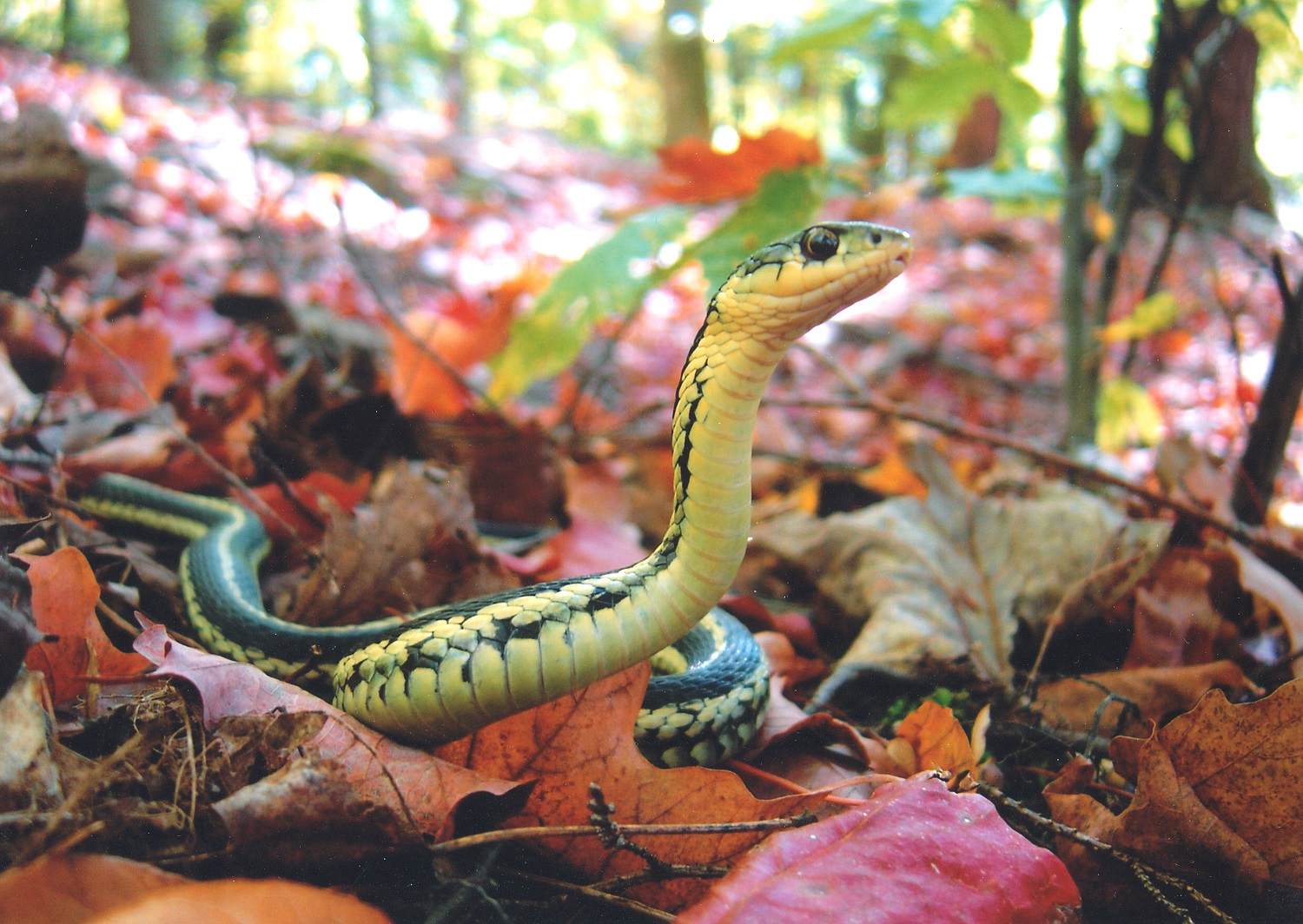
Most snakes are completely harmless to humans. Snakes are shy, and typically avoid humans at all costs.
Squirrels and chipmunks
These common rodents are found throughout Ontario.
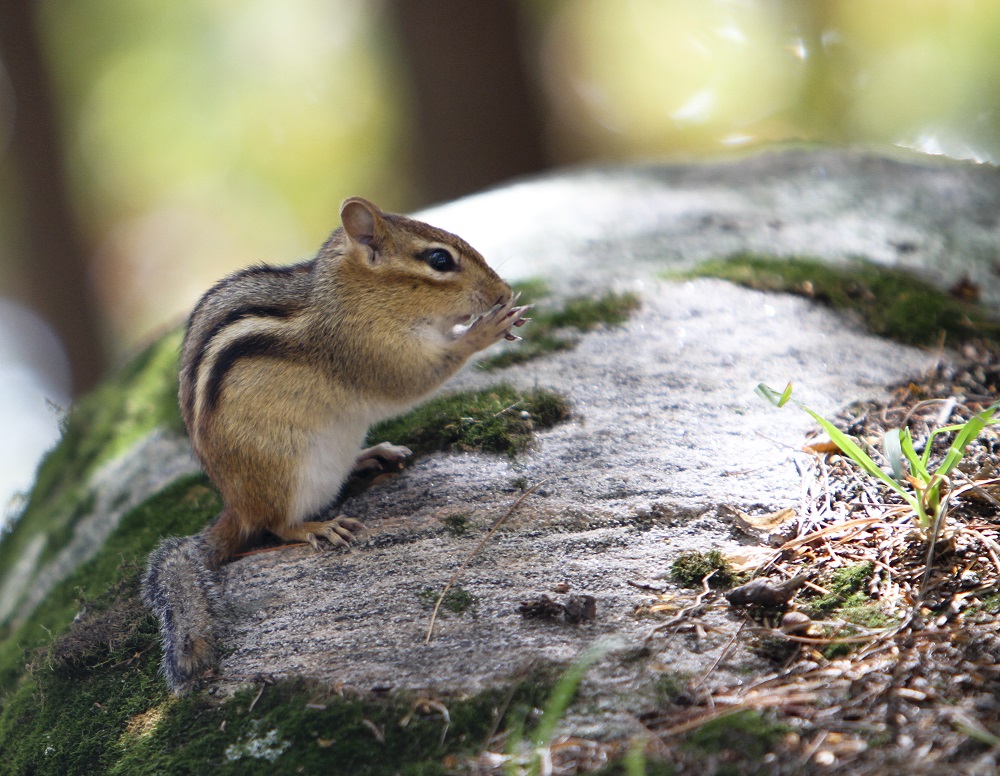
These little guys can become very persistent when they are intentionally fed.
A few peanuts can turn into a chipmunk getting into your food while your back is turned! Please don’t feed them.
Raccoons
Famous for their black mask and ringed tail, raccoons can be found in most provincial parks. Smart and adaptable raccoons can be attracted to campsites through improperly stored food sources such as your cooler contents or garbage.
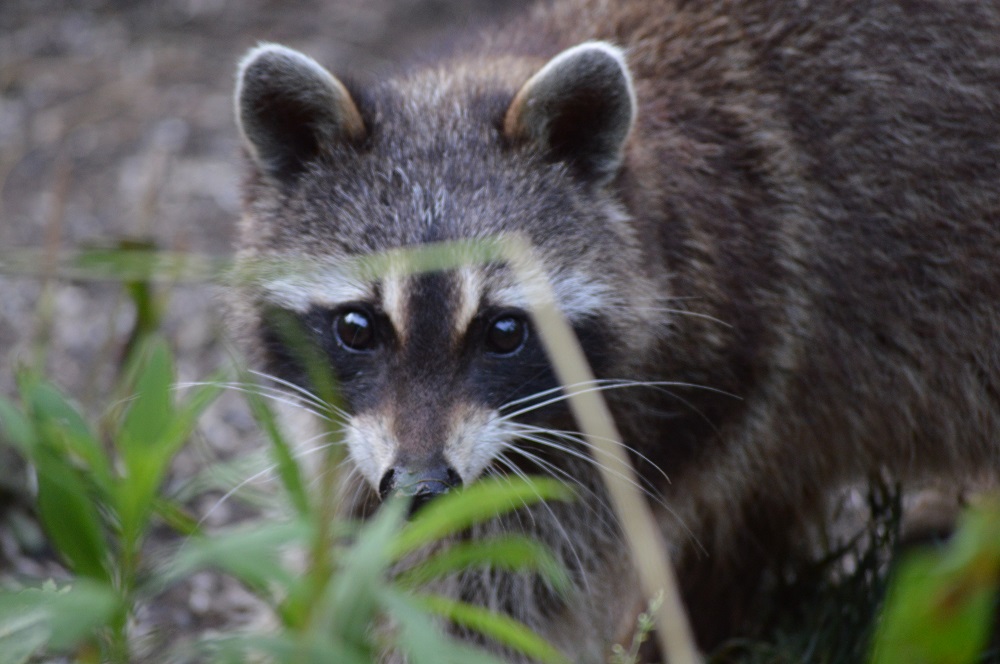
Keep your distance and ensure your natural area is attractant-free.
If you’re lucky you may spot a raccoon fishing at a lake or stream for one of their favorite meals: crayfish!
Skunks
These famously stinky critters use scent as a defense mechanism when harassed or threatened.

Anyone who’s smelled their pungent odour knows to avoid these black-and-white-stripes. Skunks are omnivorous and eat a variety of plants, small animals and insects.
Give skunks space and never try to approach them! If you get sprayed, it’s harmless, but you will stink for days!
Bears
Bears are the one animal most people fear running into when in the forest, but did you know bears are just as afraid of people as we are of them?
Bears are generally shy and elusive. They typically avoid people.
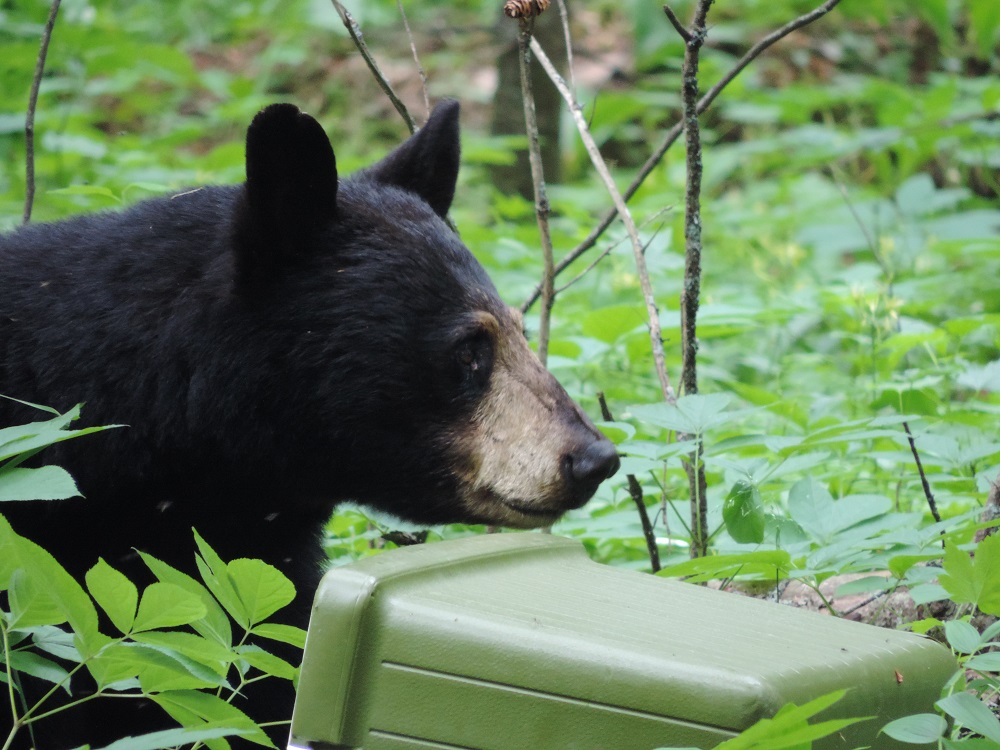
It’s rare that our visitors get a glimpse of this majestic forest creature. If you are exploring bear country, know how to react to an encounter.
Hike in groups. Three or more people in a group will almost never see a bear, as hikers are making noise and the bears actively avoid them. If you encounter a bear and it is noisy — huffing, moaning, clacking its jaws — the bear is simply telling you that you are too close and need to back away.
If you see a bear, slowly back away while keeping the bear in sight and wait for it to leave. If the bear does not leave, or approaches you, stop, raise your arms to appear large, throw objects, and yell at the bear.
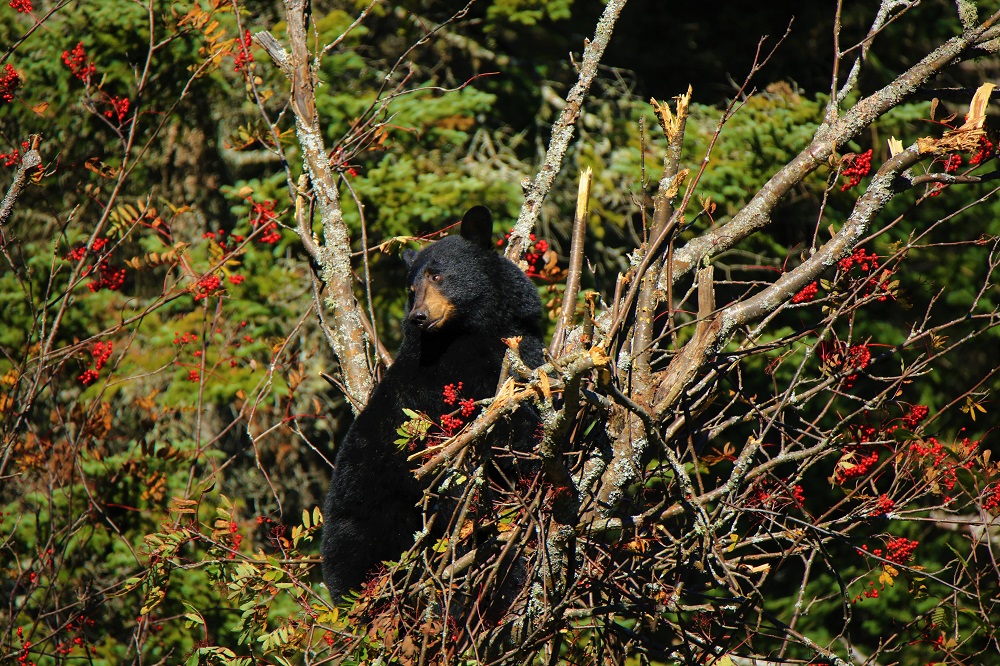
If it’s in a tree, leave it alone.
Do not run, climb a tree, approach the bear, or attempt to feed it. Visit www.ontario.ca/bearwise to learn more about these amazing mammals.
Wolves and coyotes
Wolves and coyotes are almost impossible to tell apart for the untrained eye.
Wolves are more elusive than coyotes and inhabit vast wilderness settings. They are a rarer sighting.
Coyotes, unlike wolves, have become very adept in surviving in urban environments.
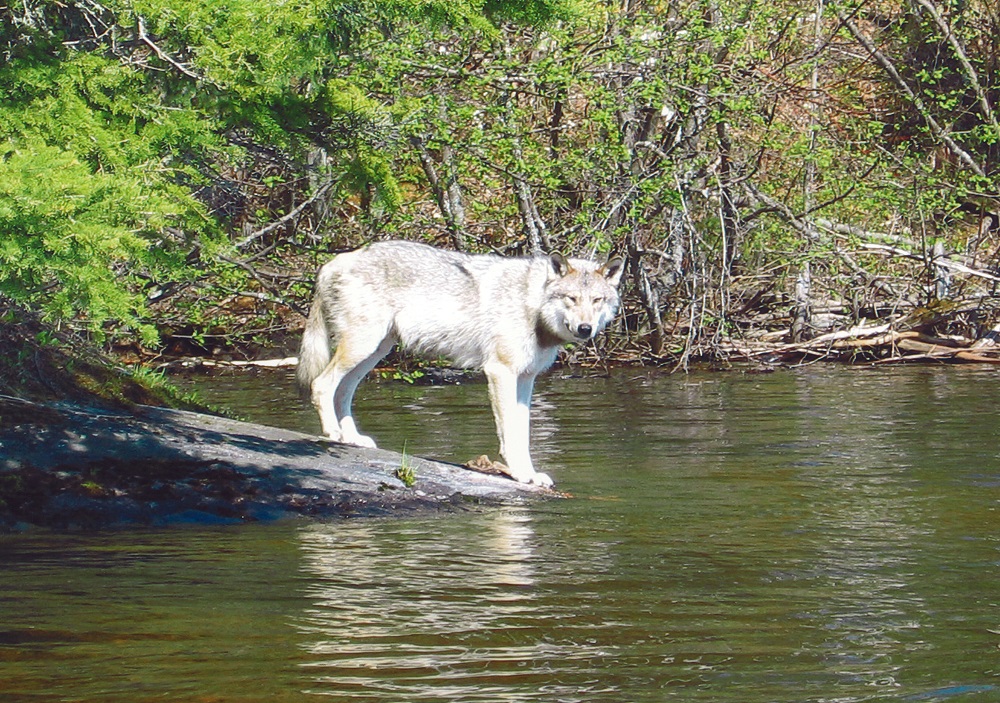
Reacting to a wild canine is like reacting to a bear: stop, slowly back away, and wait for them to leave.
If they approach you, act big, loud, and aggressive. Never turn and run, and don’t look them in the eyes.
Do you have more questions about wildlife at Ontario Parks?
If you’re still feeling nervous or unsure about animals at Ontario Parks, please send us your questions, or ask park staff when you arrive.
And remember: keeping your outdoor area clean and storing all wildlife attractants out of reach of wild critters will reduce the chance you will have an encounter with one.
